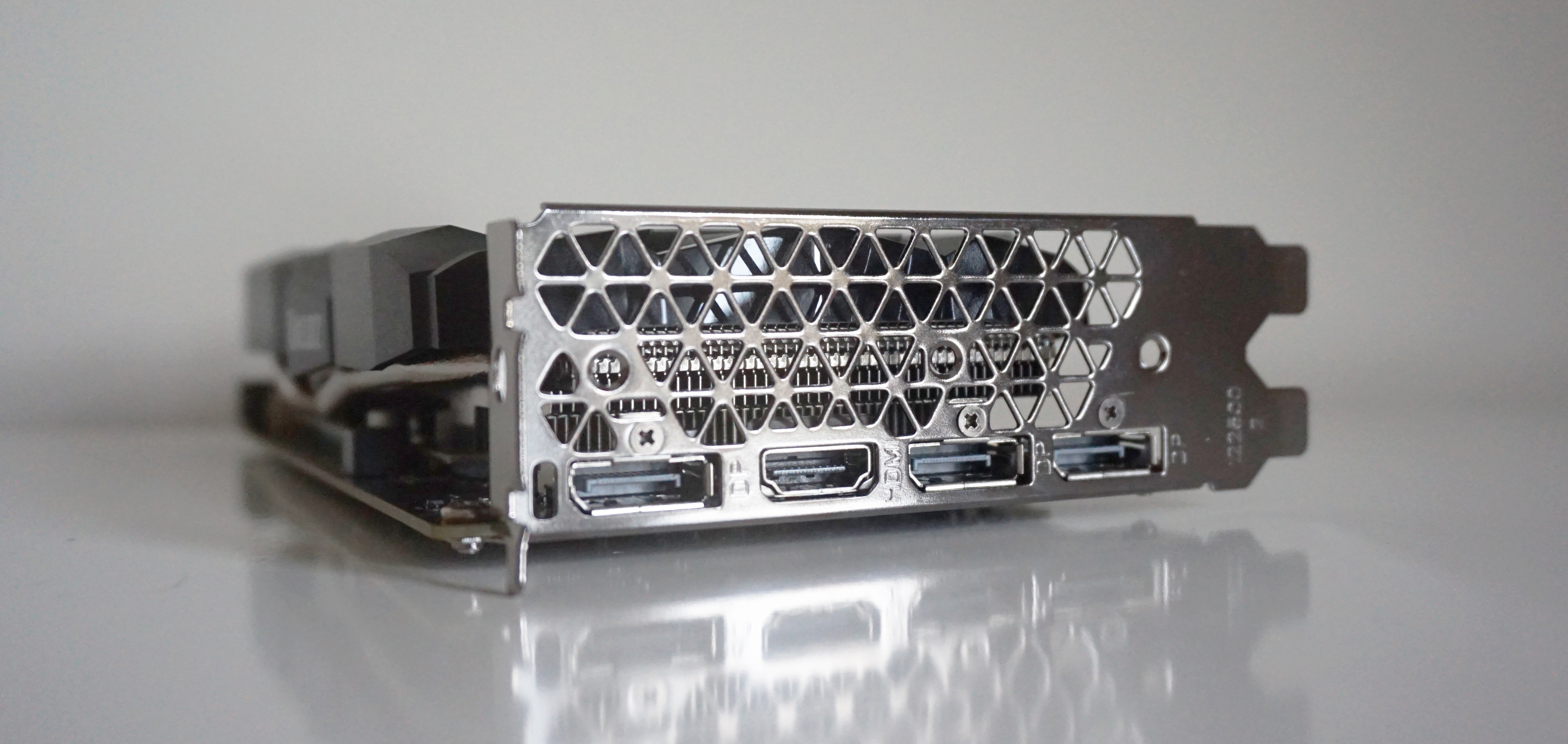Nvidia GeForce GTX 1660 Super review: A decent 1080p card that's utterly superfluous
I don't even...
I've said it before and I'll say it again. I do not understand why the Nvidia GeForce GTX 1660 Super needs to exist. Yes, it's a mildly more powerful version of the original GTX 1660, now boasting 6GB of GDDR6 memory clocked at a nippy 14 Gbps instead of 6GB of the slower GDDR5 type that ran at just 8 Gbps, and yes, Nvidia's decision to keep it at the same price of £210 / $230 means you're also getting marginally better performance for the same amount of money. That much I get.
But if the GTX 1660 Super was always on the cards down in the Nvidia graphics mines, then why bother releasing the original GTX 1660 at all? After all, it's only been eight months since the GTX 1660 first came out (at which point it went straight into our best graphics card list, I might add), so to release a shinier, superfied version now feels a bit like a kick in the teeth. There is a vague silver lining for current GTX 1660 owners, however. While some games show a decent improvement with the GTX 1660 Super, others give you absolutely naff all. Here's wot I think.
There's no Nvidia Founders Edition of the GTX 1660 Super, so to test it I've used Zotac's entry-level GTX 1660 Super Twin Fan model. This is one of the cheaper GTX 1660 Supers currently available, priced at £220 / $230, and as such should give us a good indication of what to expect as a baseline for this card's performance.
Like all GTX 1660 Super cards, Zotac's Twin Fan model comes with 1408 CUDA cores (the same as the original GTX 1660) and a base clock speed of 1530MHz (also the same as the original GTX 1660). As for its boost clock speed, Zotac have left it at the standard 1785MHz for this particular model (which is, you guessed it, the same as the original GTX 1660 spec), but other, more expensive versions have pushed it as high as 1860MHz so far, and as such may be a smidge faster than my results below.
The main difference between the two types of card, however, is its memory. As I mentioned up top, the GTX 1660 Super still has 6GB of the stuff, giving it plenty of headroom to play games on max settings at both 1920x1080 and 2560x1440 in most of today's top games, but here Nvidia have upgraded it to the faster GDDR6 type, and almost doubled its clock speed. This brings it in line with the rest of Nvidia's RTX and RTX Super cards, which all have GDDR6 memory clocked at 14 Gbps as well (except the RTX 2080 Super, whose memory is clocked at an even zippier 15.5 Gbps).
What this means in practice is a much higher memory bandwidth, allowing it to churn through 336GB of data per second as opposed to just 192GB/s. That's effectively the same as the considerably more expensive RTX 2060, which is pretty impressive for a card that's over a hundred quid less. Sadly, however, the GTX 1660 Super is not a way of getting RTX 2060 power on the cheap. Far from it. In fact, when I stuck it in my own PC, the difference between it and the original GTX 1660 I tested (the similarly entry-level Gigabyte GeForce GTX 1660 OC) was so small that I had to check I hadn't accidentally benchmarked the wrong card.
As a result, the GTX 1660 Super remains a very good 1080p card that's built for 60fps on High to max settings in today's big blockbusters, as well as a smooth 60fps on Medium quality at 1440p - exactly like the normal 1660.
Let's take Assassin's Creed Odyssey as an example. On Ultra High, my Zotac GTX 1660 Super managed an average of 49fps at 1920x1080, whereas my regular GTX 1660 came in just a frame slower at 48fps. There was a similar gap when I moved it down to Very High, too, with the Super delivering an average of 62fps over the normal 1660's 62fps. The Super flexed its muscles a bit more at 1440p, admittedly, producing a smooth 57fps on High compared to the regular GTX 1660's 53fps average, but would I have been able to tell the difference without the aid of a frame rate counter? Probably not.
It was a similar picture over in Total War: Three Kingdoms as well. On Ultra, for example, the GTX 1660 Super managed an average of 48fps at 1080p, which rose to 68fps when I nudged the quality down to High. But is that really much different than playing at 46fps and 63fps on a regular GTX 1660? Not really. Bumping the resolution up to 1440p wasn't much better either. Here, the GTX 1660 Super was still only capable of playing the game smoothly on Medium quality, for example, producing a silky average of 68fps over the regular 1660's 64fps. When I moved it up to High, however, the Super tumbled to an average of 43fps, which doesn't really feel a whole lot smoother than the regular 1660's 39fps average.
Monster Hunter: World was much the same, too. While the GTX 1660 Super managed a smooth 53fps average on Highest at 1080p, that result was still just two frames ahead of the regular GTX 1660's average of 51fps. The Super was once again a little quicker when I bumped the resolution up to 1440p, but on Mid quality we're still only talking an average of 58fps over the regular GTX 1660's 52fps.
Naturally, there are some games where the GTX 1660 Super shows more of an improvement over its non-Super sibling, but we're still only in the realms of a 5-7fps boost at the very most. Of course, in more demanding games such as Metro Exodus, that can sometimes be all it takes to make a game feel noticeably smoother, and so it proved when I put it through the game's tough internal benchmark.
On High, for example, the GTX 1660 Super produced a smooth average of 52fps at 1080p, which to me felt a smidge less choppy than the regular 1660's 47fps average. Similarly, the Super really came into its own when I re-ran the benchmark at 1440p, too, coming in with a perceptibly silkier 52fps average on Medium quality compared to the non-Super's 45fps average.
Final Fantasy XV ran better on the GTX 1660 Super as well, although once again the difference was most keenly felt at 1440p rather than 1080p. Without all of Nvidia's extra effects switched on, the GTX 1660 Super is perfectly capable of running the game on Highest at 1080p, bumping its average frame rate up to an impressive 62fps as opposed to "just" 56fps, which I got on the regular GTX 1660. It can manage a bit of HairWorks and TurfEffects as well at this quality setting, but an average of 41fps isn't really going to feel much different to the regular 1660's 39fps average.
At 1440p, however, the GTX 1660 Super made a much better fist of FFXV's Average quality settings, producing a smoother average of 58fps compared to the regular 1660's average of 53fps. Enabling TurfEffects and HairWorks was smoother, too, with the Super managing a playable average of 46fps compared to the regular 1660's choppier 42fps average. Again, though, it's hardly the kind of gangbuster improvement you might expect from a card with 'Super' in its name.
In fact, the only game in my benchmarking suite where the Super really came into its own was Shadow of the Tomb Raider. At 1080p on Highest with its tough SMAA x4 anti-aliasing enabled, for example, the Super blitzed through the busy town square of Cozumel's Day of the Dead festival with an average of 58fps. The regular GTX 1660, on the other hand, only hit an average of 52fps.
There was a similar gap when I bumped the resolution up to 1440p as well. You'll still need to enable the game's SMAATx2 anti-aliasing to get the smoothest results on Highest at this resolution, but whereas the old GTX 1660 gave you an average of 49fps under these conditions, the Super boosts that up to 55fps, putting you much closer to that elusive 60fps mark (and more importantly the GTX 1660 Ti's average of 59fps under these conditions) than ever before.
However, one game's worth of superior graphics performance out of six isn't exactly amazing, as far as I'm concerned, and heck, The Witcher III showed absolutely no improvement at all. On Ultra at 1080p, the Super produced an identical average of 64fps to the regular GTX 1660, and the same thing happened on High at 1440p as well, with each card coming in at 57fps.
Of course, all this would be null and void if the GTX 1660 Super was outright replacing the regular 1660, but for the time being at least they're both going to be available to buy at the same time. To make matters worse, Nvidia have also announced a price cut for the regular GTX 1660 to make it a more viable entry point to the 1660 family. Admittedly, that price cut has yet to take effect as far as I can tell, but given the teensy improvements you get from the GTX 1660 Super, I'm not sure it's going to be worth paying the extra when it does.
I mean, yes, if you're in the market for a decent 1080p card that doesn't involve spending more than £250 / $280 on something like a GTX 1660 Ti (which is still our recommended best graphics card for flawless 1080p gaming), then you may as well go for the GTX 1660 Super while it's still the same price (£220 / $230) as the regular GTX 1660. When that price cut kicks in, however, I reckon you'll probably be better off sticking with the regular GTX 1660 and saving yourself some cash.
It's probably also worth waiting to see what AMD have up their sleeve as well, as their new 1080p Navi contender, the Radeon RX 5500, is due to launch soon, too. There's no firm date just yet, but AMD have said it will definitely arrive before the end of the year, so we should know for sure in the next month or so.
There's also Black Friday at the end of November to take into account as well, where there will almost certainly be even better deals on 1080p graphics card than there are now. As such, I wouldn't recommend buying a new graphics card right now at all, as you'll almost certainly be able to pick up some kind of GTX 1660 card for less in just a couple of weeks. So hold fire, graphics card folks. Now is not the time to be buying a new graphics card.












